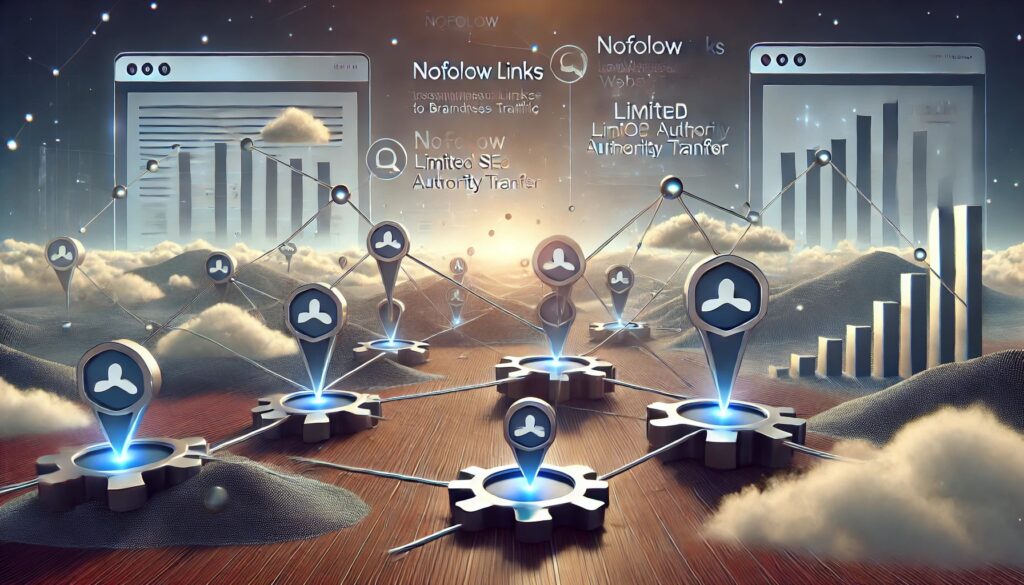In the ever-evolving world of SEO, backlinks remain a cornerstone of success. However, not all backlinks are created equal. Among the various types of links, DoFollow and NoFollow links are two crucial categories every SEO enthusiast must understand. If you’re just starting your SEO journey, this guide will simplify the concepts and demonstrate how to leverage them for better results.
What Are DoFollow and NoFollow Links?
At their core, DoFollow and NoFollow links dictate whether a search engine should follow a link to pass “link juice” or ranking power to the destination website. Here’s a simple breakdown:
- DoFollow Links: These links tell search engines to follow the link and pass on SEO benefits. They help boost the target website’s authority and rankings.
- NoFollow Links: These links instruct search engines not to follow them, meaning they don’t directly impact rankings. However, they still have their place in a well-rounded SEO strategy.
Why DoFollow Links Matter in SEO
DoFollow links are the backbone of a solid link-building strategy. They signal to search engines that the linked website is credible and worth endorsing. A website with the best dofollow links often ranks higher in search engine results. For example, when reputable sites link to your page with a DoFollow tag, they pass valuable authority, helping you establish trust in your niche.
The Role of NoFollow Links
While NoFollow links may not directly contribute to SEO rankings, they still hold value. Here’s how:
- Traffic Generation: NoFollow links can drive referral traffic from high-traffic websites, regardless of their SEO impact.
- Brand Visibility: They enhance brand exposure by associating your content with well-known platforms.
- Diversified Backlink Profile: A natural link profile includes a mix of DoFollow and NoFollow links, which prevents penalties from search engines for unnatural link building.
When to Use NoFollow Tags
There are specific scenarios where NoFollow links are essential:
- User-Generated Content: Forums, comments, and guest posts often carry NoFollow tags to prevent spam.
- Paid Links: Links that are part of sponsorships or ads should be NoFollow to comply with search engine guidelines.
- Affiliate Links: NoFollow tags ensure transparency and compliance with SEO rules.
Learn more about creating the perfect mix of links in this backlink guide.
How to Check if a Link Is DoFollow or NoFollow
To determine the type of a link:
- Inspect Element: Right-click on the link and select “Inspect.” Check the link’s HTML. If it includes
rel="nofollow", it’s a NoFollow link. - SEO Tools: Tools like Ahrefs, Moz, and Semrush can analyze your website’s link profile and categorize links as DoFollow or NoFollow.
The Benefits of a Balanced Link Profile
A successful SEO strategy requires a mix of DoFollow and NoFollow links. Here’s why balance is crucial:
- Authenticity: Search engines value a natural link profile. Excessive DoFollow links may trigger suspicion.
- Referral Traffic: NoFollow links can still attract highly targeted audiences, boosting engagement metrics.
- Brand Building: Whether DoFollow or NoFollow, links from reputable sources enhance credibility.
How to Acquire DoFollow and NoFollow Links
Building a mix of links requires strategic effort. Here are some proven methods:
- Guest Blogging: Writing high-quality guest posts for authoritative websites often results in DoFollow backlinks. Read this guest blogging guide for actionable tips.
- Engage with Communities: Contribute valuable content to forums or Q&A sites like Reddit and Quora, which typically use NoFollow tags.
- Leverage Anchor Text: The right anchor text can enhance link relevance, whether it’s DoFollow or NoFollow.
- Partner with Influencers: Collaborations often lead to natural backlinks, both DoFollow and NoFollow.
Common Mistakes in Managing Links
Avoid these pitfalls when working with DoFollow and NoFollow links:
- Ignoring NoFollow Links: Overlooking NoFollow links means missing out on valuable referral traffic and brand exposure.
- Buying Links: Purchasing DoFollow links is against search engine guidelines and risks penalties.
- Over-Optimization: Excessive optimization of DoFollow links may result in an unnatural profile and penalties.
Tools for Managing Your Links
Modern SEO tools make it easy to analyze and manage your backlink profile. Here are some favorites:
- Ahrefs: Excellent for comprehensive backlink analysis and competitor insights.
- Moz: Ideal for tracking domain authority and link quality.
- Semrush: Offers robust features for link building and keyword research.
Why DoFollow and NoFollow Links Are Both Important
DoFollow and NoFollow links each play unique roles in an effective SEO strategy:
- DoFollow Links: Boost authority and rankings, directly influencing your site’s performance.
- NoFollow Links: Diversify your link profile, drive traffic, and build brand awareness.
Conclusion
Understanding DoFollow and NoFollow links is fundamental for anyone navigating the SEO landscape. While DoFollow links enhance rankings and authority, NoFollow links provide essential traffic and visibility benefits. By striking a balance and leveraging the right tools, you can create a robust backlink strategy that drives long-term success.
Are you ready to build a well-rounded backlink profile? Start by identifying high-authority websites for link building. Check out this backlink guide and unlock your website’s full potential!










